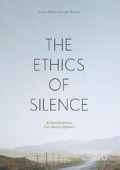Abstract
One cannot explore the relationship between self and other without exploring self-identity through sexuality. Thus, we decided to look at one particular manifestation of sexual and gender identity: in the transgender “ladyboy” communities of Cambodia and Thailand. This interview brought another facet of our research question to light: the interplay between etic and emic approaches. “Emic” expressions are thoughts and actions that refer primarily to an actor’s (culturally bound) self-understanding. “Etic” models, by contrast, describe phenomena in constructs that apply across cultures. Traditionally, researchers have opted to use either one perspective or the other, employing different principles and methodologies. In an increasingly globalized world, where no person or action operates within a cultural vacuum, a more integrative approach may lead to greater understanding.
Access this chapter
Tax calculation will be finalised at checkout
Purchases are for personal use only
Notes
- 1.
Board of General Superintendents, Church of the Nazarene. “Human Sexuality” (n.d.), http://nazarene.org/organization/general-secretary/human-sexuality.
- 2.
Jarrett Davis, “Identity and Development: A Case Study of the People of Looban Outreach Church,” Asia-Pacific Nazarene Theological Seminary Resource Center. www.apnts.edu.ph/resourcecenter/…/Davis%20Identity%20and%20Development.pdf.
- 3.
Sam Winter, “Country Report: Thailand.” Transgender ASIA Research Centre, Research Papers (2002). http://www.transgenderasia.org/country_report_thailand.htm. Accessed June 21, 2016.
- 4.
Ibid.
- 5.
Sam Winter and Nuttawut Udomsak Male, Female and Transgender: Stereotypes and Self in Thailand. International Journal of Transgenderism, 6, 1 (2002).
- 6.
Janessa Ilada and Ry Mount, “The Third Gender in Thailand”. https://maytermthailand.org/2015/04/27/the-third-gender-in-thailand-kathoeys. See also Jackson, 1998.
- 7.
See Ford and Kittisuksathit, 1994 and Han ten Brummelhuis, (1999). Transformations of transgender: The case of the Thai kathoeys. In Jackson, P. and Sullivan, G. (Eds.). Lady boys, tom boys, rent boys: Male and female homosexualities in contemporary Thailand. New York, USA: The Haworth Press.
- 8.
Winter and Udomsak, op. cit.
- 9.
Michael Morris, Kwok Leung, Andrew Myers and Bryan Nickels. “Views from Inside and Outside: Integrating Emic and Etic Insights about Culture and Justice Judgement.” Academy of Management Review, Vol. 24, No. 1 (1999), 781–796.
- 10.
According to the United Nations Global Report on Human Settlements 2003 (“Understanding Slums”), the community in question falls somewhere between two categories: iskwater (Tagalog version of “squatter,” referring to a physically disorganized collection of shelters, made of light and often visually unappealing materials, where poor people reside) and looban (meaning inner areas where houses are built very close to each other and often in a manner not visible to the general view of the city). http://www.ucl.ac.uk/dpu-projects/Global_Report/home.htm/.
- 11.
Power distance’ is defined as “the extent to which the less powerful members of institutions and organizations within a country expect and accept that power is distributed unequally.” See Geert Hofstede, Culture’s Consequences: Comparing Values, Behaviors, Institutions, and Organizations Across Nations (Thousand Oaks, CA: SAGE Publishing, 2001), 98.
- 12.
Frank Lynch. “Social Acceptance Reconsidered,” found in Philippine Society and the Individual, Edited by Frank Lynch (Quezon City: Institute of Philippine Culture, Ateneo de Manila University, 1984), 36. See further, Davis (2011), 101 ff.
- 13.
Davis, 2011, 89.
- 14.
Davis, 2011, 143.
- 15.
Loc. Cit.
- 16.
According to 2011 government statistics, in a country of 101 million people, there were only 1,400 cases of child sexual abuse reported – and of those, only 29 people were male. Yet in a random sampling of 55 street-working boys interviewed by Love146, 33 disclosed some form of sexual violence.
- 17.
“On the other hand, there are some people who are so used to coping with their trauma that they can talk about it freely, there might be disclosure, but they have no internal connection to it.”
References
Costa, Lee Ray and Andrew Matzner. 2007. Male Bodies, Women’s Souls: Personal Narratives of Thailand’s Transgendered Youth. New York: Haworth Press.
Davis, Jarrett. “Identity and Development: A Case Study of the People of Looban Outreach Church.” Unpublished manuscript of Master’s thesis. Asia-Pacific Nazarene Theological Seminary Resource Center. www.apnts.edu.ph/resourcecenter/…/Jarrett%20Identity%20and%20Development.pdf. Accessed June 22, 2016.
Ford, Nicholas and Sirinam Kittisuksathit. 1994. “Destinations Unknown: The Gender Construction and Changing Nature of the Sexual Expressions of Thai Youth.” AIDS Care, 6(5): 517–531.
Jackson, Peter and Nerida Cook, eds. 2000. Genders and Sexualities in Modern Thailand. Chiang Mai: Silkworm Books.
Jackson, P. A. 2003. “Performative Genders, Perverse Desires: A Bio- History of Thailand’s Same- sex and Transgender Cultures.” Intersections: Gender, History & Culture in the Asian Context, 9. Internet edition available at http://intersections.anu.edu.au.
Nanda, Serena. 2000. Gender Diversity: Cross-cultural Variations. Long Grove, Illinois: Waveland Press.
ten Brummelhuis, Han. 1999. “Transformations of Transgender: The Case of the Thai kathoeys. ” In Jackson, Peter and Gerard Sullivan, (Eds.). Lady Boys, Tom Boys, Rent Boys: Male and Female Homosexualities in Contemporary Thailand. New York: The Haworth Press.
Totman, Richard. 2003. The Third Sex – Kathoeys: Thailand’s Ladyboys. London: Souvenir Press.
Winter, Sam. 2002. “Country Report: Thailand.” Transgender ASIA Research Centre. http://www.transgenderasia.org/country_report_thailand.htm. Accessed June 21, 2016.
Winter, Sam and Nuttawut Udomsak. 2008. “Male, Female and Transgender: Stereotypes and Self in Thailand.” International Journal of Transgenderism, 6(1). http://www.symposion.com/ijt/ijtvo06no01_04.htm. Accessed June 21, 2016.
Author information
Authors and Affiliations
Rights and permissions
Copyright information
© 2017 The Author(s)
About this chapter
Cite this chapter
Billias, N., Vemuri, S. (2017). Silence Looking Out and Looking In (Southeast Asia). In: The Ethics of Silence. Palgrave Macmillan, Cham. https://doi.org/10.1007/978-3-319-50382-0_4
Download citation
DOI: https://doi.org/10.1007/978-3-319-50382-0_4
Published:
Publisher Name: Palgrave Macmillan, Cham
Print ISBN: 978-3-319-50381-3
Online ISBN: 978-3-319-50382-0
eBook Packages: Religion and PhilosophyPhilosophy and Religion (R0)

